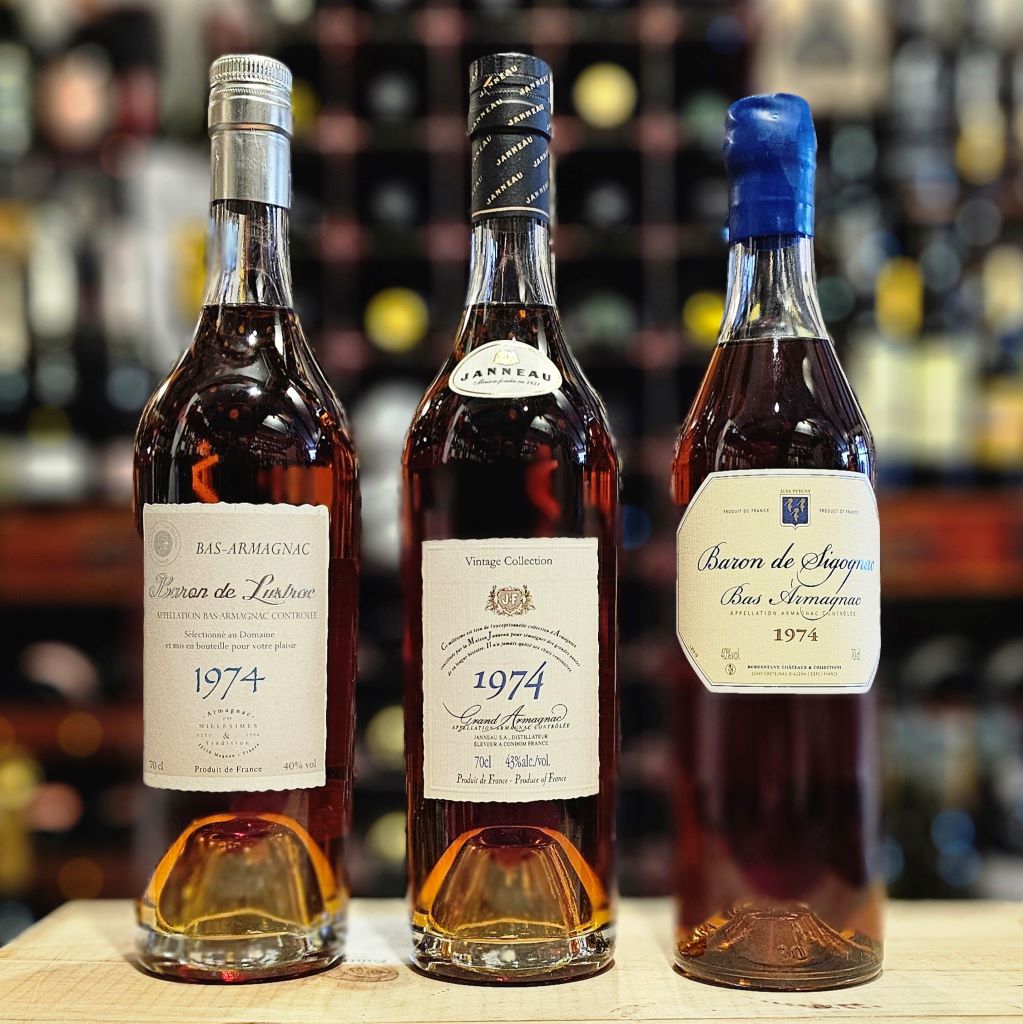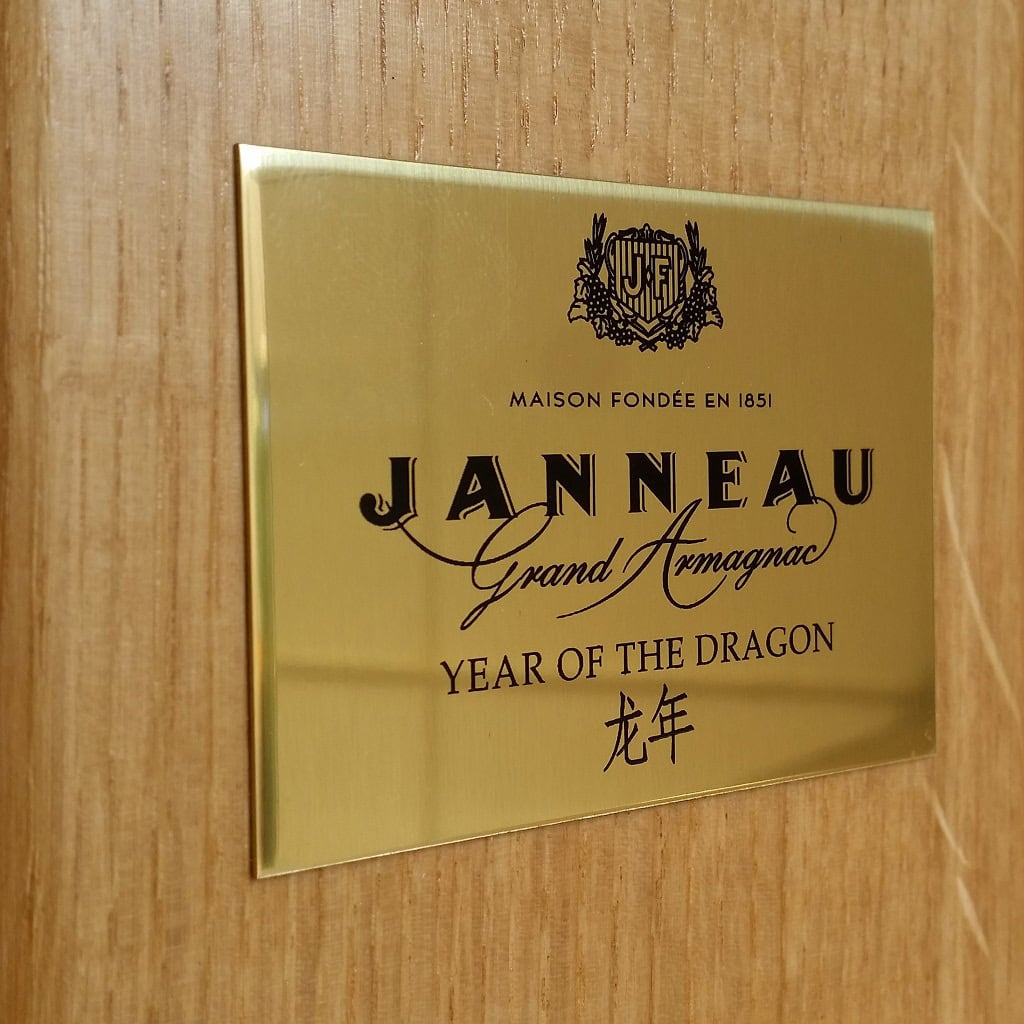
At Fareham Wine Cellar, we sell many different Vintage Armagnacs, particularly as birth year gifts, and we get asked all sorts of questions, so I thought I would collate some into a single post. Please do let us know if you have any more questions.
See Vintage Armagnacs available at Fareham Wine Cellar here.
Vintage Armagnac is a French Brandy from the Gascony region in the South West of France. A Vintage Armagnac is made from grapes harvested from a single, specific year. Vintage Armagnac may be bottled from a single barrel or can be blended from different barrels from the same vintage.
Growers have five years from the harvest to declare brandies they wish to sell as vintage or age statement; however, these must be aged a minimum of
10 years before it is allowed to be bottled as a Vintage Armagnac.

The quality of each vintage is partly related to the climatic conditions of that year. Although vintage variation is not as pronounced as it can be in wines, each bottle reflects the unique characteristics of that vintage year, and the flavours and styles can be quite different from year to year.
Have a look at the Baron de Sigognac Vintage Chart to see how they have classified their vintages. It allows you to cross-reference the five primary tastes – spices, fruits, bakery, floral, and green – with three different weights, ranging from “fine, light, and easy to drink” to “classic, rich, and well-balanced,” up to the “more powerful and expressive” vintages.
There are 10 grape varieties permitted in the production of Armagnac. The key ones are:
Ugni Blanc (also known as Trebbiano) – This grape variety became more prevalent after the Phylloxera blight and now accounts for over 80% of all vines in the region. It contributes excellent acidity levels and a well-balanced character that produces a well-balanced distillate.
Folle Blanche (Also known as Picpoule or Gros Plant) – This was the variety of the region until 1870 but after Phylloxera, it did not take well to grafting and showed a susceptibility to grey rot. It does, however, have excellent levels of acidity and aromatics that are perfect for distillation.
Colombard – Grown in small quantities, it gives fragrance and aroma to a distillate.
Baco 22A – Named after Mr Baco, this hybrid, which is a cross between Folle Blanche and the deservedly maligned Noah, was an attempt to
retain some of the Folle Blanche character. Baco 22A is especially suited to the sandy soils of Bas Armagnac and produces brandies with a big
structure that can often require many years of oak ageing to tame their power.
Other grape varieties include Clairette de Gascogne, Jurançon blanc, Plant de Graisse, Meslier Saint François or Mauzac Blanc and Rosé. These old varieties have become increasingly rare. In some cases, there are just a few hectares of vines left. However, some are now being replanted in an attempt to preserve the heritage and historic diversity of Armagnac grape varieties.

It must be aged for at least 10 years before bottling. Vintage Armagnac spends most of its life quietly ageing away in oak barrels in cellars in Armagnac. It is normally bottled to order. So, by the time it arrives on our shelves for sale, it will have most likely have been bottled in the previous 12 months.
Not all bottles of a vintage Armagnac are bottled at once. For example, if you were to purchase a bottle of 1974 Vintage Armagnac in 5 years time, it would be a more developed spirit having spent another 5 years ageing in barrel.
Some producers put the bottling date on the back label, Baron de Sigognac does, for example. Others do not.
Vintage Armagnac should be stored upright so the alcohol does not attack the cork. It should be kept in a cool, dark place, away from direct sunlight and temperature fluctuations. It does not need to be refrigerated.

Spirits do not change noticeably once they have been bottled (actually it does change, but not very noticeably).
Once opened, there is no hurry to drink your bottle of brandy. It does not oxidise like a wine or vintage Port, but it is best consumed within a few years, because it does lose some of its character with time. The BNIA (see below) recommend keeping it opened for no more than 1 to 2 years.
Armagnac’s governing body, the BNIA (Bureau National Interprofessionnel de l’Armagnac), has striven for many decades now to ensure that the provenance of vintage and age statement Armagnacs is sound. When there is a movement of these spirits—be it a bulk, bottled sale or simple management of logistics—the BNIA must be informed. The BNIA will also conduct producer stock checks with any irregularities carrying punitive measures including the cellar losing its vintage status. Thus, those that import and subsequently distribute, wholesale, or retail very old Vintage Armagnacs can be confident that the contents of each bottle are true to its label.
XO Armagnac is a blended Armagnac which the youngest spirit in the blend must be aged for a minimum period of years, similar to XO Cognac.
In fact there are three different designations for blended Armagnacs:
VS (Very Special) or 3 Star – the minimum age of Armagnac in the blend has to be aged for at least 2 years in oak barrels
VSOP (Very Superior Old Pale) – the minimum age of Armagnac in the blend has to be aged for at least 4 years in oak barrels
XO (Extra Old) or Hors d’Age – the minimum age of Armagnac in the blend has to be aged for at least 10 years in oak barrels
Is My Vintage Armagnac Genuine?